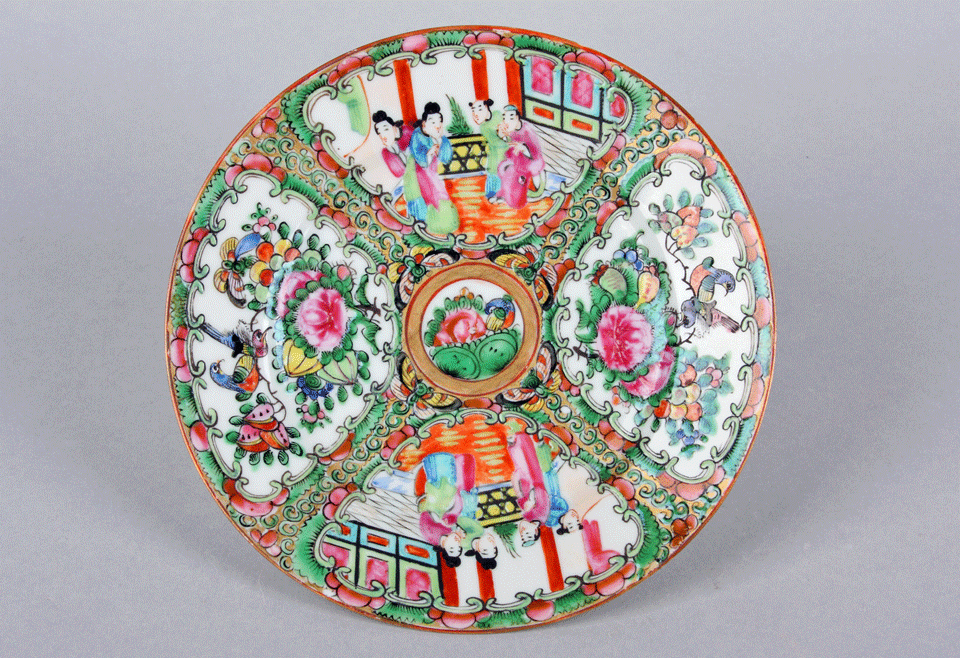
2012.91.141, Porcelain plate, Rose Medallion pattern; 1920s or 1930s
Eason Eige collection; photo by B.Bernard

2012.91.141, Porcelain plate, Rose Medallion pattern; 1920s or 1930s
Eason Eige collection; photo by B.Bernard
Beginning in the mid-1800s, China began producing a new, highly colorful style of porcelain to export to the world. The plate shown above is a typical example of the Rose Medallion style: a central medallion that usually shows a bird or peony, surrounded by four or more panels showing people, flowers and birds. Similar styles include Rose Mandarin (people but no birds) and Rose Canton (flowers but no people or birds). Rose Medallion porcelain continues to be made today.
To see additional pieces of Rose Medallion pottery, please scroll down the
page.
Elsewhere in this exhibit, a Corrales resident
explains how she came to own an entire dinner service of Rose Medallion china.
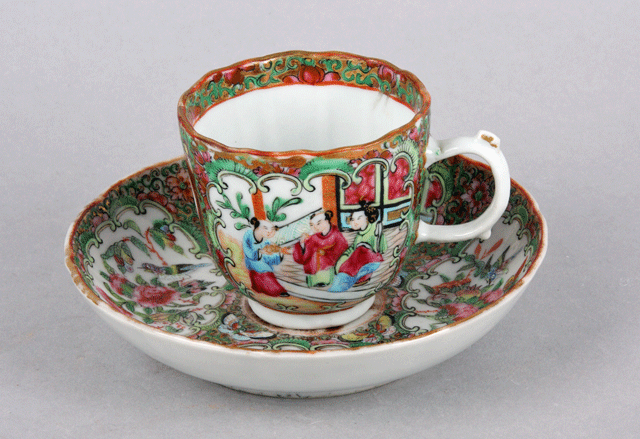
Tea cup and saucher, Rose Medallion pattern
Eason Eige collection; photo by B. Bernard
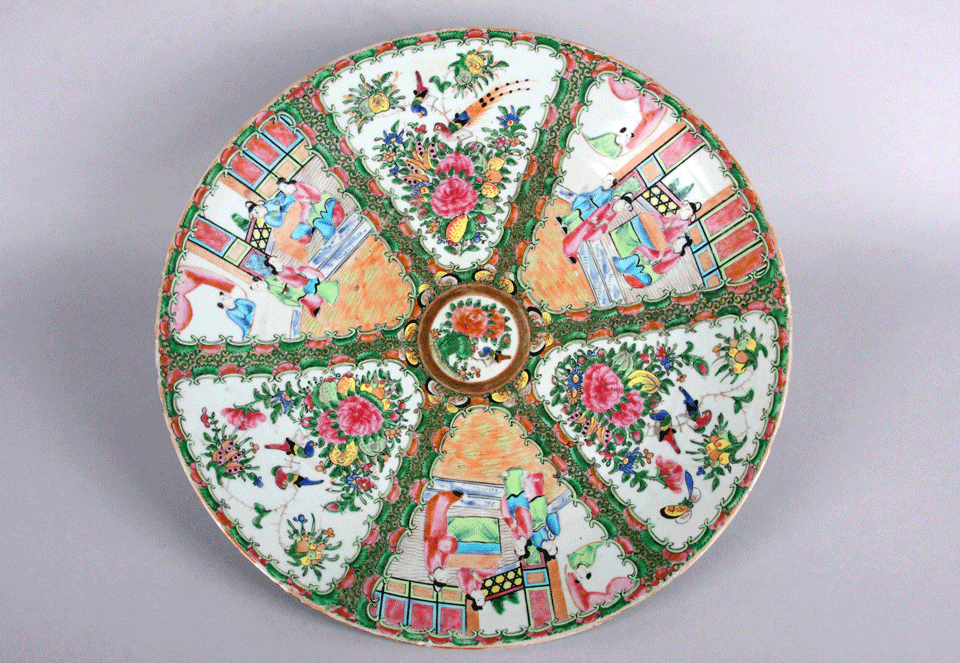
2012.91.138, Serving plate, Rose Medallion pattern; early to mid-1800s
Eason Eige collection; photograph by B. Bernard.
The serving plate shown above measures about 14 inches (35 cm) in diameter.
It's not uncommon for a Rose Medallion plate that large to include
six rather than four panels of designs.
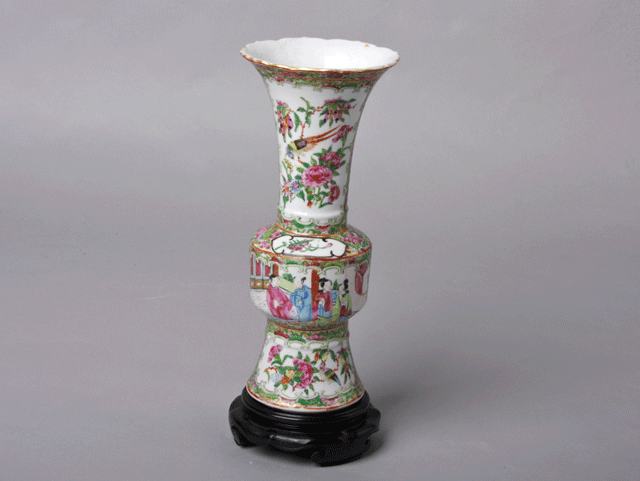
Mantel Vase, Rose Medallion pattern
Eason Eige collection; photo by T. Ocken
A hundred years ago you might have found the mantel vase shown above,
and a second one
just like it, on a mantelpiece in a well-to-do European or Euro-American home.
The vase may have held fresh or dried flowers, or perhaps it simply sat there
to add a decorative touch. Hand-painted
porcelain from halfway around the world would have a been a clear statement
about the family's claims to social status and taste.
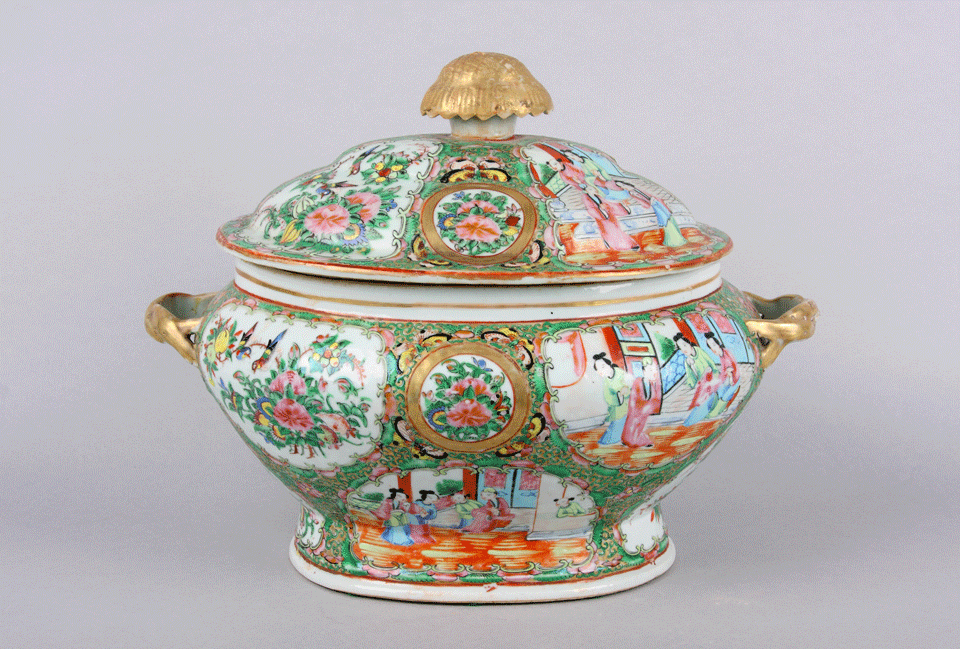
Tureen and lid, Rose Medallion pattern
Eason Eige collection; photo by B. Bernard
Soup tureens are rarely used these days, but in years past they were part of formal suppers in "polite society." One of the many supper courses was the soup course and needless to say, the tureen had to match the family's other tableware. On a more practical level, transporting the soup to the table in a tureen ensured that the soup stayed warm as long as possible. In an anthropological sense, this tureen tells us as much about Western society and its habits, a century ago, as it does about Chinese ceramics.
See source code for copyright information. Page last revised on September 16, 2015. Please report problems to toh@unm.edu